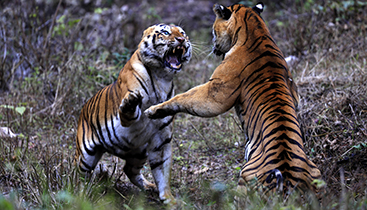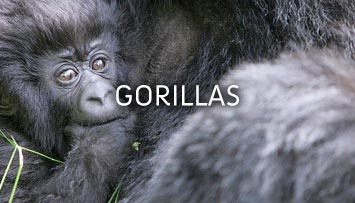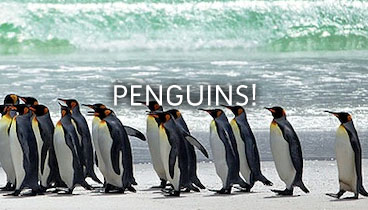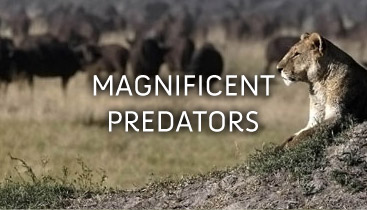Travel & Photo Essays
Elephants Have Fabulous Tits
Elephants have fabulous tits! You’re probably thinking that this tells you a lot more about me than about elephants, and in a direction that you could probably do without knowing. What sort of pervert would even think that about elephants, for God sake? And, even if somebody did think it, why on earth would they put it in writing? Clearly Nathan’s been out in the bush a little too long. Perhaps so, but there is a bit more to this story than it may seem.
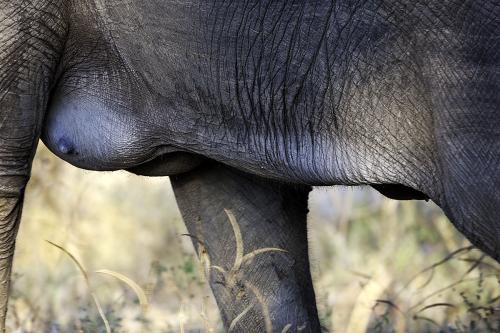
Part of the charm of traveling to Africa is to see nature in all of it glory. Some of that is full of awe and grandeur, but some of it is brutal, violent and gory. That much you probably can infer from the parts they leave out of nature documentaries. In addition to the blood and gore, or the awe and majesty, there is also a lot of stuff that is unconventional, awkward, and weirdly funny.

That includes topic that would be embarrassing, inappropriate, and maybe just a little bit sick if we were talking about humans; a throwback to the gross out bathroom humor of 4th grade, or locker room humor at any age. Polite conversation tends to shy away from human bodily functions, but animals? That’s a bit different; we’re allowed a bit more leeway with them.
People who would never watch a porn flick are, at least on safari, captivated by watching lions mate, or guffaw at an elephant’s erection, or its prodigious defecation. Hey, it’s all part of the raw view of life you get on safari. It also provides a bit of needed comic relief from the blood and gore. These weirder moments are the topic of this particular travelogue – the stuff others are too polite to mention. I hope you think this is interesting rather than repellant, but if not you can always click the back button right now.
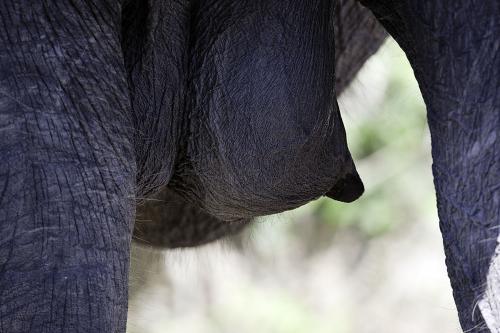
All female mammals have teats and mammary glands, for they are fundamental defining characteristic of the Class Mammalia. That’s what makes the duck-billed platypus a mammal. It lays eggs and has a duck-like beak, but it has teats, which makes it a mammal.
Humans are no exception, but the shape and form of human female mammary glands – which I have studied intently since puberty – is rather unique. That’s the distinction I am drawing between teats and tits. Human females, as we all know, have two breasts, positioned on the chest, between their arms (which translates into forelegs in four legged mammals). That is a pretty unusual arrangement compared to other mammals.
Cows, horses, goats and sheep have udders – totally different shape and position. Plus, they have only one udder, with no bilateral symmetry. Pigs, dogs and cats and many others have multiple nipples in two rows down their bellies. They don’t have breasts per se, although there is some swelling when they are full of milk and actually nursing. It would be odd to see a human female with four breasts; we expect that everybody has two. That isn’t true for dogs, which can have eight to 12. Pigs can have as few as six and as many as 16, and many other mammals have similar variations. The breed helps determine this to some degree, but even within a breed there is variation in the number of nipples from one individual to the next.
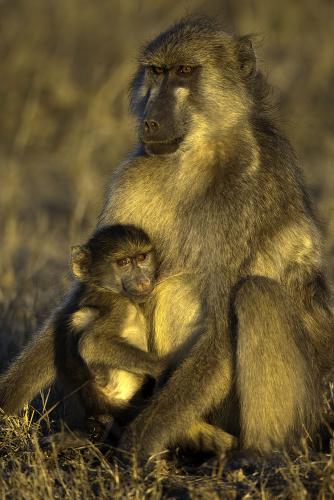
Even the closest relatives to humans – monkeys, baboons, chimpanzees and gorillas don’t have human style breasts. They have two nipples, on the chest in about the same position, but there is no breast per se. Put another way, they have zero cleavage. Indeed, if you look at a picture of a baboon nursing, you see that it has very flat and stretchy nipples, but is otherwise quite flat chested even while full of milk.
So imagine my surprise when I looked at a female elephant and realized that they have fabulous tits! Elephant tits are in the same place (on the chest, in between the forelegs). They even have cleavage between their very human shaped breasts. That said, you need to make a few allowances. Every part of an elephant is covered with wrinkled gray skin, including their tits, so they aren’t going to have the same smooth supple skin tone you’d see in the Sports Illustrated swimsuit edition. Nevertheless they are the most human-like mammary glands you’ll find anywhere in the animal kingdom, other than humans of course.
Why this is so is quite unclear, but here is the best guess. Baby elephants don’t use their trunks for anything – they require a lot of coordination and babies just don’t have that coordination. As an example, I have seen baby elephants literally trip over their own trunks. Learning to control the trunk takes years of practice and is one of the major tasks a young elephant must accomplish. In the meantime, the trunk gets in the way of nursing. The nipple must stick out quite a ways from the mother’s body, otherwise the baby elephant couldn’t get it in their mouth, which is set quite a ways back because of the trunk. Human-style tits work perfectly for this.
That still begs the question of why they look so human. An udder would also work to suckle baby elephants, so why don’t they have one? Perhaps, genetically speaking, the human breast type is easy to make, so when elephants and humans needed to have projecting breasts, random mutations happened to find a common solution. As soon as you lay down some extra fat cells, and take account of the biomechanics, then voila – tits happen.
Wondering about elephant tits begs an interesting question; why do human females have tits in the first place? That is a question that has been pondered widely without much progress. Most mammary glands in the animal kingdom only swell when they are full of milk. Human breasts are quite obvious even without any milk in them, due to fat cells that are permanently there.
One idea is that this faux-fullness is some sort of advertising that the female in question could produce a lot of milk, and thus be a good mother. Research has shown that the size of breasts does not correlate to the amount or quality of the milk produced; yes, that’s right, breasts are the other notable case where the size doesn’t count. There are many examples in biology of fraud or deceptive signaling, and maybe it is true here. Breast size depends primarily on fat cells, which are just there for padding. If true, it should give plastic surgeons something to think about. It would mean that all breasts are fakes at some level. Whether artificial silicone or fat, either way they are stuffed with something just to make them look good.
A variation on this theory says that full-looking breasts are a kind of camouflage to hide whether the woman is nursing or not. While nursing most mammals have clear visual swelling of the teats or udder, because of the stored milk. Some evolutionary theories of human sexuality suggest that there is an advantage in hiding the fact you already have babies because it lets a women come on to males as if she was single. So, the theory goes, the always-full-looking breasts make it possible to seem to be carefree single, even if you are nursing.
Another theory is that humans, as a highly visual species, needed to have an obvious visual indication of femaleness. Male deer have antlers as a way to obviously differentiate bucks from the does. It also lets bucks size each other up, and help create a status hierarchy. Perhaps human females developed breasts that overtly advertised their femaleness for the same reason. It makes a certain amount of sense – in either case you can say “wow, look at that nice rack”, even from a distance. An advantage of the visual advertisement theory is that it also explains human female hips and butts, which also differ noticeably from those of males (thank heavens). I would love to delve into this topic further, but alas tits are our topic here; booty is beyond the scope of the present work.
Animals that have a better sense of smell, like dogs, don’t need this sort of visual cue. Of course that also means that dogs stick their noses between each others’ legs when they meet. I think women would find that even more annoying than men staring at their chests.
The “nubility hypothesis” holds that large breasts convey the message that their owner is young and nubile, with good reproductive potential. The key idea here is that gravity does not lie. Breasts sag with age, and the larger the breasts, the more obvious the effects will be. So, the theory goes, males should prefer females with large, perky breasts, as a proxy for youth and nubility.
Maybe this is how it worked in evolutionary history, but Marie Tucek and Helene Pons worked to subvert it. These intrepid women invented the underwire bra. As is only fitting (pun intended), most bra inventors have been women. Like many technologies, the bra we know today wasn’t invented all at once; instead several key ideas were invented separately, incrementally building up (pun intended again) the features found in today’s bras. The Victoria’s Secret catalog celebrates sexy models, but the reality is that it was a bunch of smart inventive women that came up with the technical ideas that (literally) support the lingerie industry. Marie was among the first to get in the game, getting her first push-up bra patent in 1893. Her version used a stiff sheet of cardboard or metal, anticipating Madonna by more than a century. Helene made the same concept much more practical by patenting a bra with an “open ended wire loop” in 1931, and then in 1932 followed up with a patent on a bra that supported and separated the breasts with wire loop. This pretty much put an end to the idea that gravity does not lie, at least when clothed.
Yet another theory says that human breasts projected as our faces evolved to be flat. Not for adults mind you, but for nursing infants. Chimps and monkeys have faces (and crucially, noses) that project out much more than ours do. The evolution of the large brain in humans drove our faces to be much flatter. The theory as it relates to breasts is that babies would suffocate if they had to press their flat little noses against mom’s flat chest. So, as the theory goes, humans evolved projecting breasts. The problem with this theory is that we just as well could have evolved really long or stretchy nipples, which is what most primates have.
Or, maybe human tits have another origin entirely. Many theories have been proposed, but none are really convincing. A review paper on the topic in a scientific journal says it all in the title: “Human Breasts: Unsupported Hypotheses Reviewed.” Clearly, there are some mysteries science has yet to figure out.
Having exhausted tits as a topic, we now move on to genitals. But before we go there, a bit of an anatomy lesson is in order. Virtually all mammals are duotremes – they both pee and poop, with separate pipes for carrying liquid (urine) and solid (feces) from the body. The duckbilled platypus is the only mammal that breaks this rule it is a monotreme, which has only one pipe for eliminating waste. The same one-pipe system is used by reptiles, amphibians, fish and birds.
Remember this the next time a bird “shits” on your windshield. The reason that it is a goopy mess is that it isn’t really shit - is the equivalent of both urine and feces mixed together. In fact, it’s easy to tell which is which - the white part of bird shit is uric acid crystals, which is their highly concentrated urine. The dark part is the equivalent of fecal matter. Some birds have a very liquid output, to the degree that one could think that they are urinating, but that just isn’t possible for them.
The single pipe that birds use is called the cloaca, which is the Latin word for sewer. The enormous sewer built for ancient Rome was called the cloaca maxima (a fact that makes ornithologists giggle). Besides eliminating waste birds hide their genitals there. The equivalent of the vagina for female birds is tucked up inside the cloaca. For birds, all sex is anal sex.
Male birds differ on their genital equipment. Most species of birds don’t even have a penis – sperm is secreted from the male cloaca as it is rubbed up against the female’s cloaca. Of the ones that do have a penis, it is hidden inside the cloaca. The engineering of this is quite remarkable, especially in ducks, which can a penis that is up to twice the length of their bodies (usually shaped like a corkscrew). But, I digress, duck dicks are not the topic today because I haven’t taken a good picture of one. Instead, it is the ostrich that is our focus. The ostrich has a penis which is mounted on what looks like a folding retractable arm, a bit like a small crane. In ostriches, they have to move it out of the way in order to take a dump, and as luck would have it I managed to catch a male ostrich in the act. So, we all get to ogle its normally hidden penis.
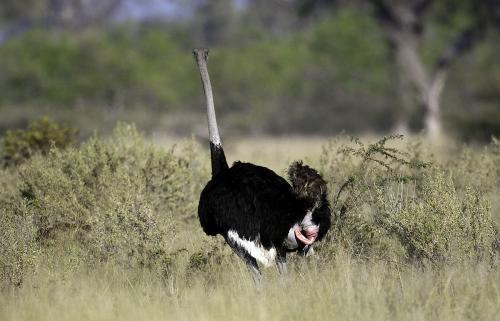
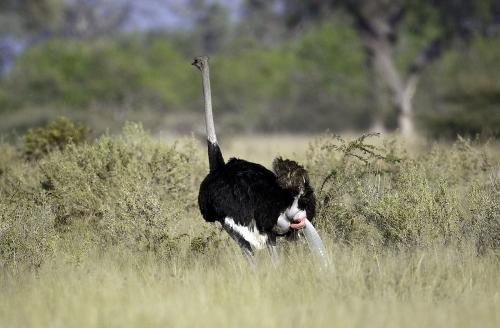
The reason I know so much about this is that I study dinosaurs, and they are thought to have the same arrangement. They are closely related to birds, and in particular ratites, the group of large flightless birds including the ostrich, is thought to be a very close model to many aspects of dinosaur physiology. This includes their genitals. Alas, soft tissue is not preserved when things die and fossilize, but there is one telltale clue. In order to reel the penis back inside the cloaca after taking a dump, or having sex, birds have a muscle called, appropriately enough, the penile retractor muscle. This attaches to one of the tail bones in a very specific place. This has been found in several species of dinosaurs, providing evidence of their genital arrangement, although like many things in paleontology it is controversial. This also gives a way to determine the gender of fossil specimens – it is otherwise quite difficult to tell male from female from just the bones. In mammals determining gender from bones is easy, because the female has a pelvis designed to pass a large baby, so it is quite different from a male pelvis. Dinosaurs laid eggs, and these eggs were so small compared to their body size that no special pelvic accommodation was necessary.
While still in the genital department, I can’t pass up discussing the vervet monkey. Vervets live in groups called troops that have a clear male dominance hierarchy. In some primates high status males are easy to spot by their physical size. In others, status is reinforced visually, say with an expensive car, fancy tie or corner office. In male vervets, their status is signaled by colorful anatomy. They have, hands down, the best looking scrotums in the animal kingdom.
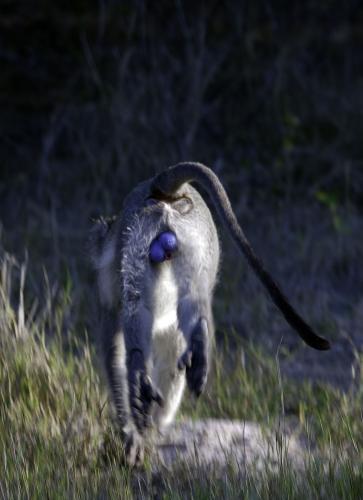
High status males have a dark, iridescent and intensely blue scrotum. Lesser males have a scrotum that is lighter colored, all the way down to pale baby blue. Yes that is right, this is a species where every last one of them has blue balls all the time. Experiments have shown that the scrotum can fade or darken over the course of a couple weeks depending on how the monkey is doing in his hierarchy. If he rises in status, it will get darker, if he falls in status, it becomes paler. Other research has shown that the color directly correlates to serotonin levels in the monkey, which in turn relate to aggression and their sense of well-being in the hierarchy.
As a result, you can always tell who is the top guy in a vervet troop – just look for the shiny blue balls. In case you don’t get the message, the dominant male will often make a rather obvious display of his scrotum, along with his erect, bright red penis. It’s the sort of message that’s pretty hard to miss.
This is the sort of thing that animal behaviorists just can’t get enough of, so they’ve done all manner of experiments, like catching the monkey and painting their balls a lighter or darker shade of blue. Sure enough, the monkeys respond. Low rank vervets who get a dark ball upgrade start acting like it. If these monkeys watched TV, they’d have a reality show doing the makeovers.
The vervet’s scrotum is unique as a display feature – other mammals don’t seem to use it this way. Indeed, one can ask what a scrotum is for in the first place. As with breasts, the answer is elusive. A commonly repeated theory is that sperm require slightly cooler temperatures, so they can’t be inside the body. Yet birds (which have higher body temperatures) don’t seem to have a problem. Neither do elephants – they have no scrotum and keep their testicles internal to the body. A recent scientific paper on the evolution of the scrotum begins with the line “The adaptive significance of scrotum is unresolved after more than 60 years of debate and experimentation.” It’s another mystery waiting to be solved.
The color of the vervet’s scrotum is also interesting. It isn’t a pigment in the conventional sense – it is a structural color. That means that the vervet’s skin has a layer of tiny particles of collagen that reflect light coherently. This occurs because the particles are exactly the right size, and spaced periodically at exactly the right spacing to cause the light to undergo constructive interference. Most colors of light that hit the skin are absorbed but those within a narrow frequency band are reflected, creating an intense pure blue. The same trick gives morpho butterflies in Central America their electric blue wings. It also generates the amazing colors that sparkle within an opal.
More recently these periodic arrays of particles have become a sensation in optics where they are called photonic crystals. The first artificial photonic crystal was fabricated in 1996, and since then has become one of the hottest areas in optics.



